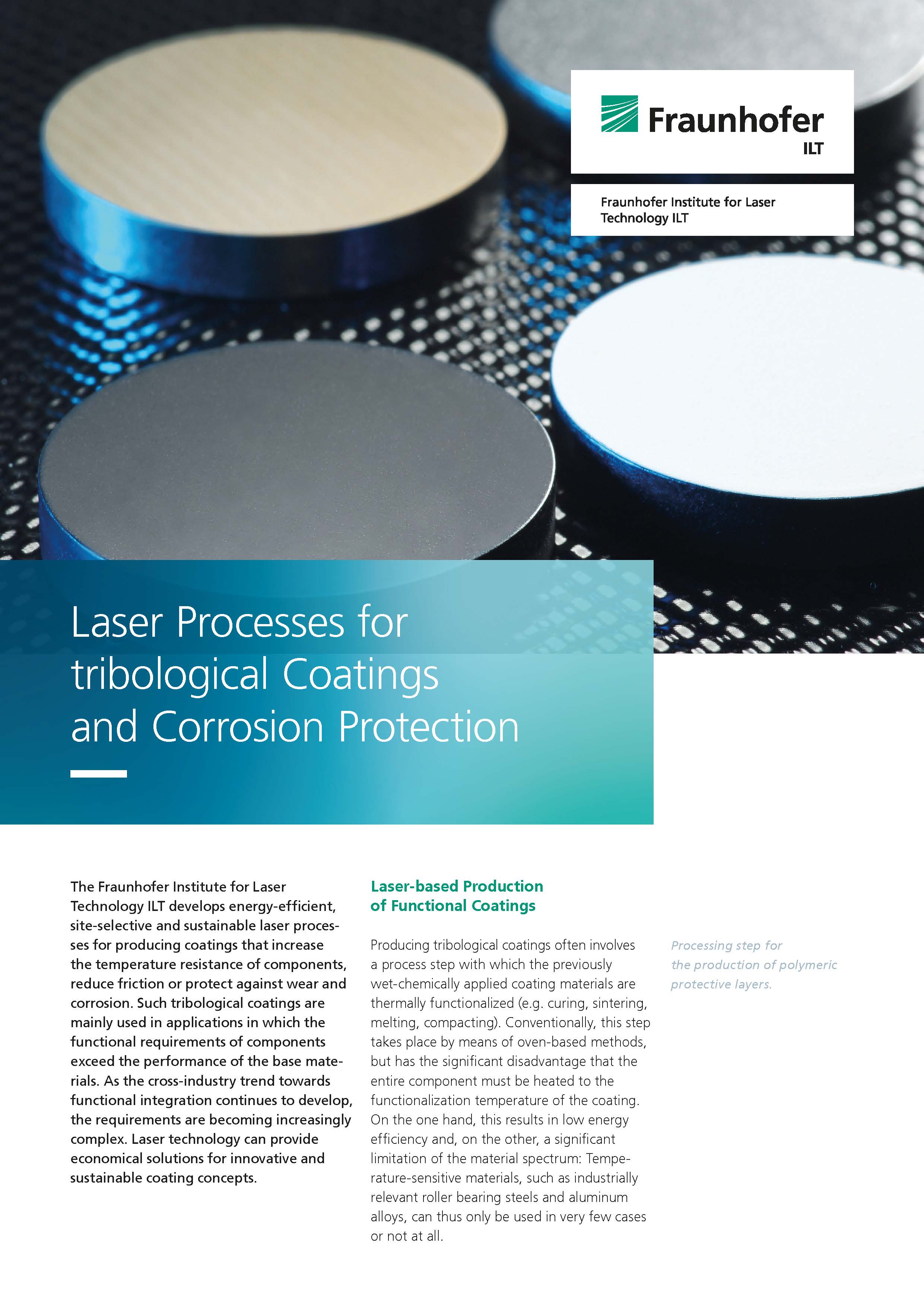Producing tribological coatings often involves a process step with which the previously wet-chemically applied coating materials are thermally functionalized (e.g. curing, sintering, melting, compacting). Conventionally, this step takes place by means of oven-based methods, but has the significant disadvantage that the entire component must be heated to the functionalization temperature of the coating. On the one hand, this results in low energy efficiency and, on the other, a significant limitation of the material spectrum: Temperature-sensitive materials, such as industrially relevant roller bearing steels and aluminum alloys, can thus only be used in very few cases or not at all.
One promising alternative is a laser-based coating process with which the thermal energy is introduced directly into the coating and not into the entire component. The spectral, temporal and spatial controllability of the laser radiation allows an application-adapted modulation of the temperature profiles in the component. Since large heating and cooling rates can be achieved in defined small volumes, the energy input into the component can be reduced and the thermal load thus minimized.
Compared to conventional methods, this laser process has, for example, ecological and economical advantages: The laser, as a non-contact and wear-free tool, processes the coatings quickly and efficiently. The process developed has been designed for the industrial changes triggered by Industry 4.0 (i.e. for machine networking and integrated data management).

 Fraunhofer Institute for Laser Technology ILT
Fraunhofer Institute for Laser Technology ILT